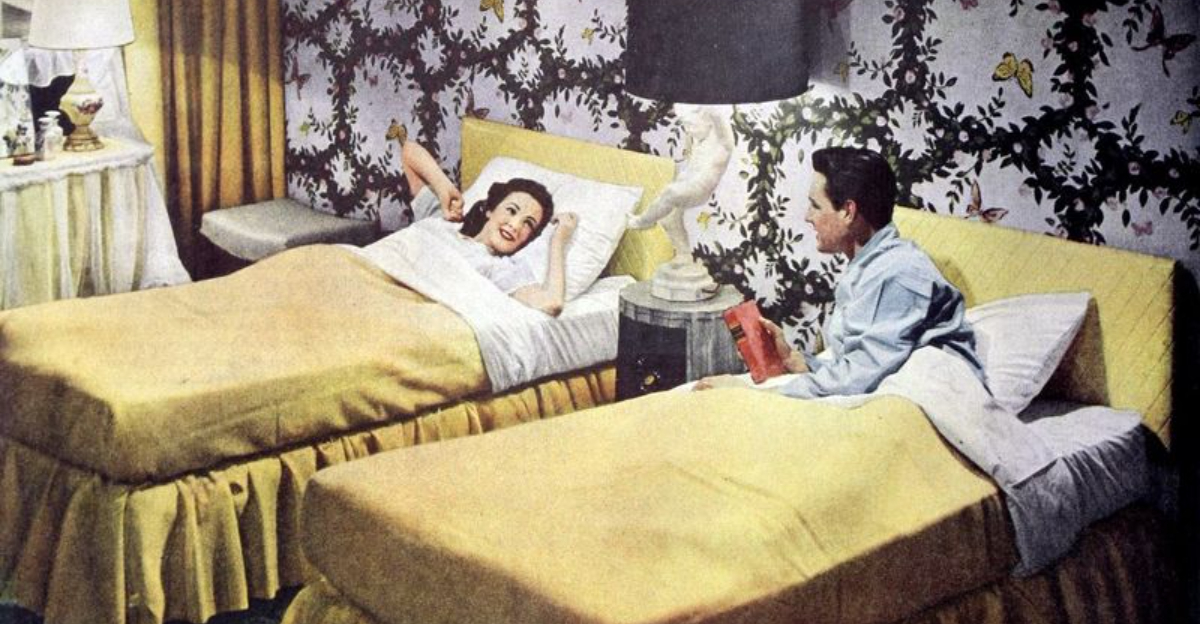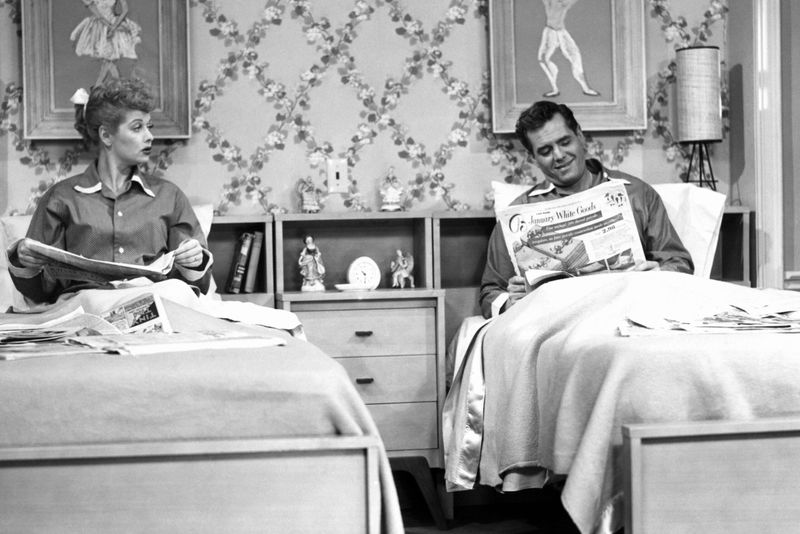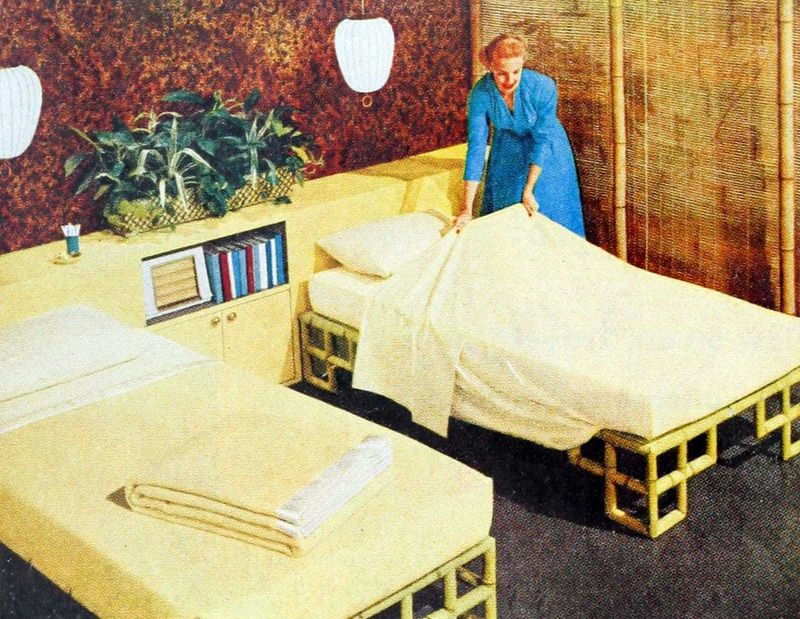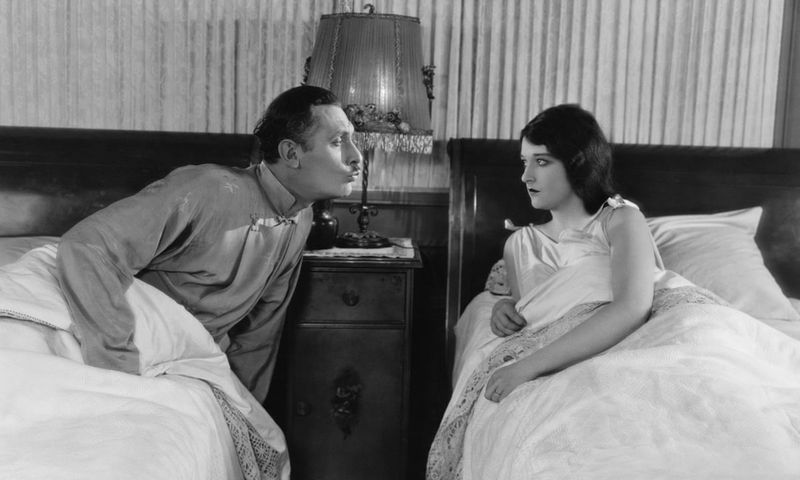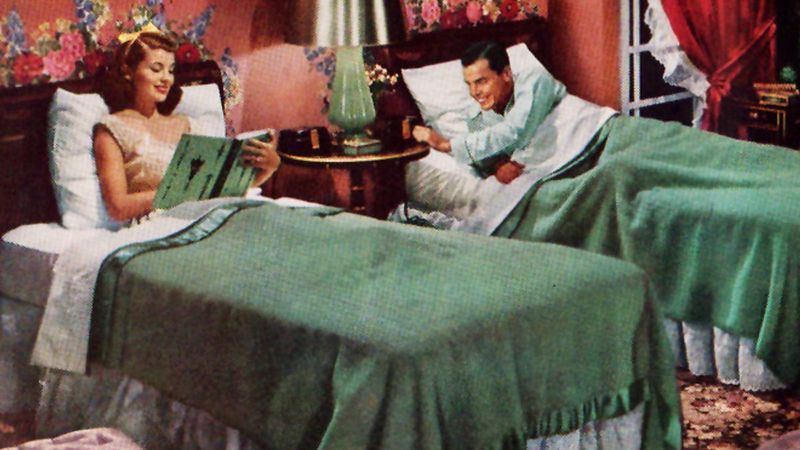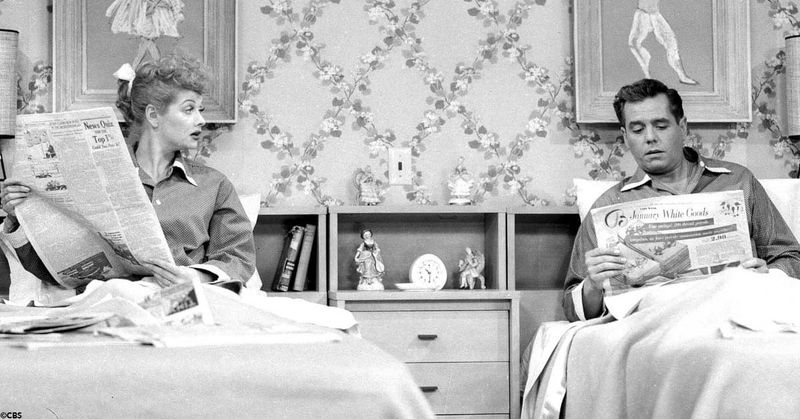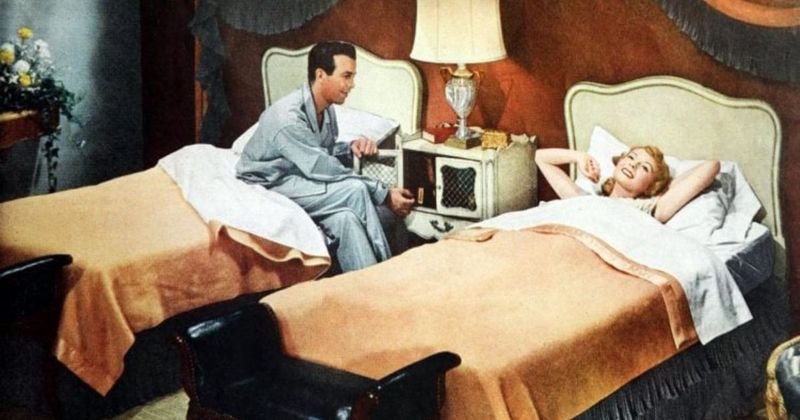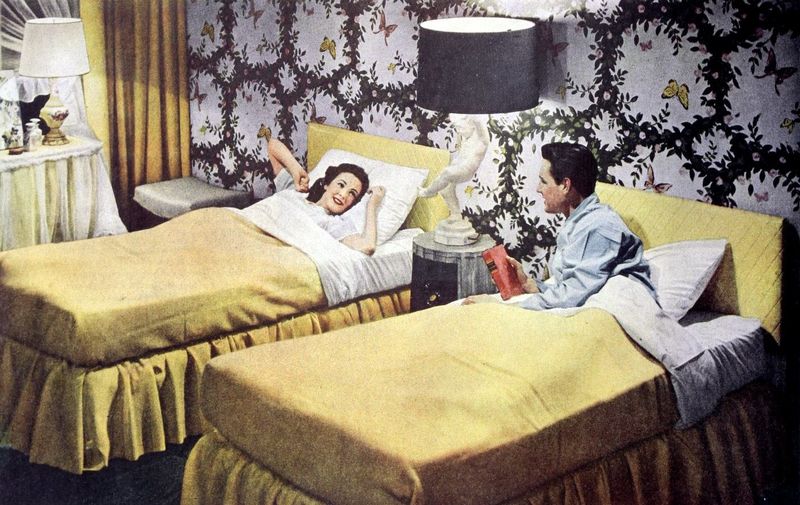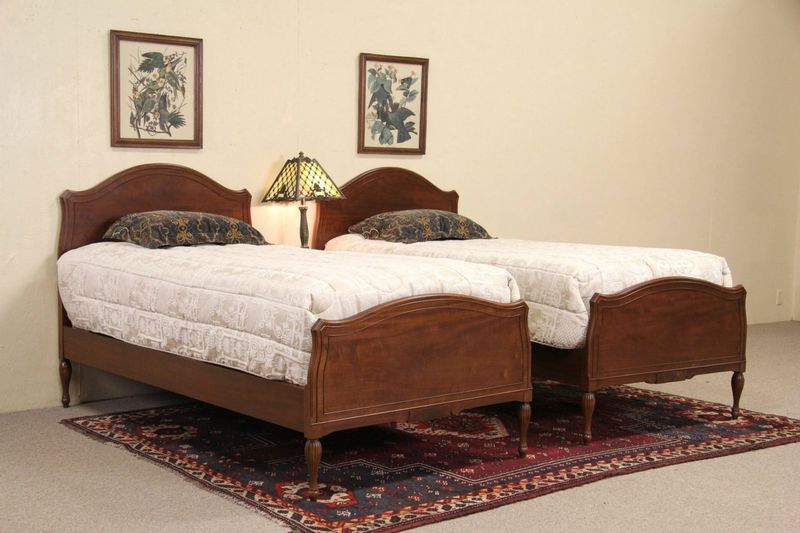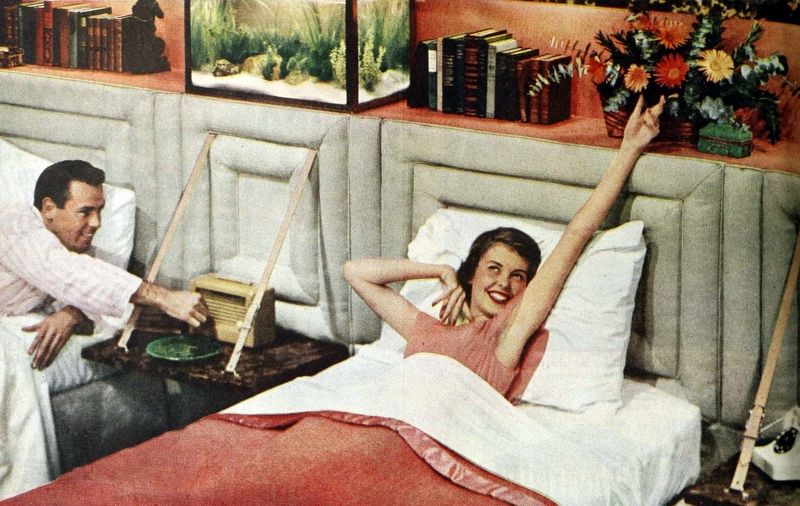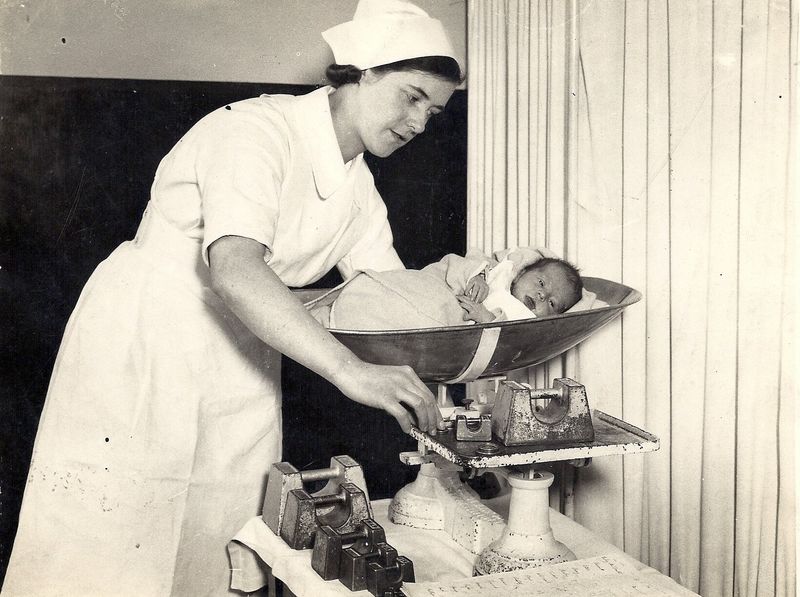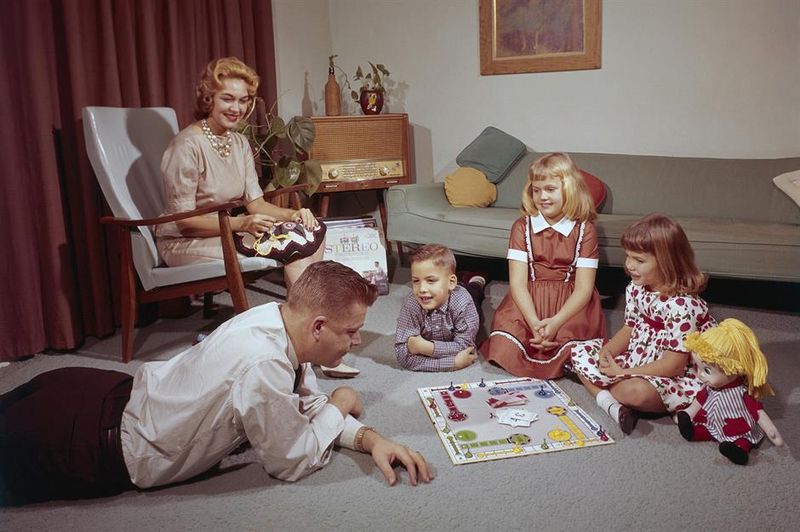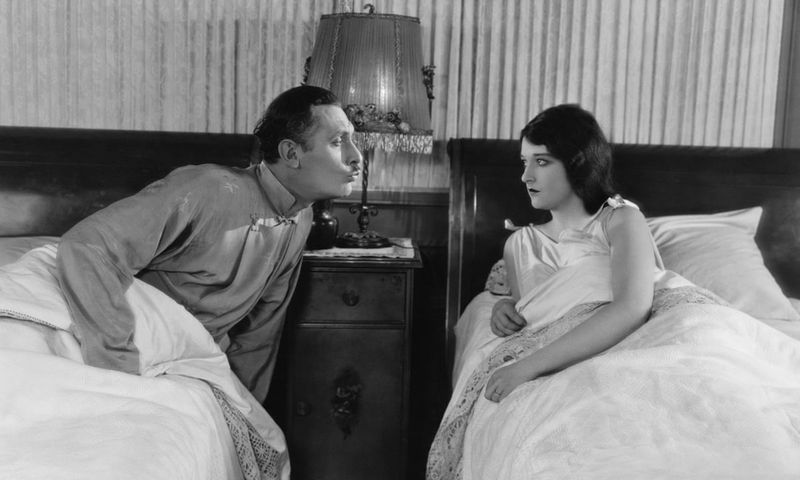When we look back at classic sitcoms like I Love Lucy or The Dick Van Dyke Show, it’s hard to miss the twin beds in married couples’ bedrooms. It wasn’t just a TV trope—many real-life couples in the 1950s also slept in separate beds.
Here are 15 fascinating reasons why this sleep setup was once considered perfectly normal.
1. TV Censorship Made It Seem Normal
Television censorship in the 1950s played a significant role in normalizing separate beds for married couples. The Hays Code, followed by the FCC guidelines, restricted the portrayal of couples sharing a bed, fearing it would offend conservative viewers.
This led to popular shows like I Love Lucy displaying twin beds, reinforcing the idea that separate sleeping arrangements were not only acceptable but preferable. These media portrayals seeped into public perception, making the concept of sleeping in separate beds appear as a standard and respectable practice during that era.
2. Separate Beds Were Considered Classy
In the early 20th century, separate beds were viewed as a sign of sophistication and wealth. Twin beds, often adorned with exquisite linens and luxurious headboards, were thought to reflect a couple’s hygiene consciousness and modernity.
This classy image was further amplified by high-end catalogs and department stores showcasing twin bed setups. These representations, coupled with societal aspirations for refinement, cemented the notion that separate beds were a hallmark of a cultured and modern marriage, appealing to those who valued appearance and status.
3. Doctors Promoted It for Health
Medical professionals in the 1950s advocated for separate beds, believing it was beneficial for health. Physicians argued that sharing a bed could disrupt sleep patterns and potentially contribute to the spread of illness.
The idea was that a good night’s sleep, free from disturbances like snoring or restless movements, was essential for maintaining health. This medical endorsement gave many couples the justification they needed to embrace separate sleeping arrangements, seeing it as a proactive step towards a healthier lifestyle.
4. Victorian Morality Still Lingered
The echoes of Victorian morality lingered into the 1950s, influencing social norms around modesty and propriety. The idea that intimate marital activities should remain private and separate from everyday life led many to adopt twin beds.
This arrangement was seen as a way to uphold moral standards, reflecting a time when public modesty was paramount. Couples adhered to these values, viewing separate beds as a means to maintain decorum and proper behavior in the sanctity of their bedroom, mirroring the virtue and restraint of earlier generations.
5. Good Sleep Was Prioritized
In an era when good sleep was highly valued, separate beds offered a practical solution for achieving restful nights. Differences in sleep schedules, snoring, or restless legs could easily disrupt shared sleep. By opting for twin beds, couples found they could enjoy uninterrupted slumber, waking up refreshed and ready for the day.
This focus on quality rest resonated with many, as the demands of daily life required alertness and energy, making separate beds an attractive option for those prioritizing their well-being and daily performance.
6. Hygiene Concerns
Hygiene played a significant role in the decision for couples to sleep in separate beds. The prevailing belief was that close bodily contact while sleeping could facilitate the spread of germs and illnesses. By maintaining separate sleeping spaces, couples felt they were minimizing the risk of contagion.
This concern for cleanliness and health was part of a broader societal focus on hygiene during the 1950s, where personal and domestic cleanliness was often equated with moral virtue, ultimately influencing bedroom arrangements.
7. Personal Space Was a Luxury
In the 1950s, personal space became a cherished luxury, especially within the confines of the bedroom. Twin beds provided couples with their own space to relax and unwind without encroaching on each other’s comfort.
This delineation of space was seen as a symbol of respect and independence within a marriage, allowing each partner to maintain their own comfort zone. The allure of having a private sanctuary, even while sharing a room, appealed to many, reinforcing the appeal of separate sleeping arrangements as a mark of a modern and considerate relationship.
8. Furniture Marketing Reinforced It
Marketing played a crucial role in popularizing separate twin beds during the 1950s. Furniture catalogs and department stores often depicted elegant twin bed setups, emphasizing modernity and sophistication.
This marketing strategy was effective in persuading consumers that such arrangements were not only fashionable but also a smart choice for contemporary living. These advertisements reinforced the idea that having twin beds symbolized a progressive household, aligning with the era’s trends and aspirations for modernity and elegance in domestic life.
9. The Bedroom Was a Public Space
In wealthier 1950s households, the bedroom often served as a public space, open to visitors and guests. Twin beds were considered more appropriate for such settings, conveying a sense of propriety and decorum.
This arrangement allowed couples to present an image of modesty and refinement, aligning with societal expectations of the time. The practice of showcasing bedrooms to visitors further solidified the perception that twin beds were a suitable choice, offering a glimpse into the couple’s tasteful and socially conscious lifestyle.
10. Pregnancy and Postpartum Norms
During pregnancy and postpartum recovery, women in the 1950s were often encouraged to sleep separately from their husbands. The rationale was to ensure comfort and minimize disturbances, promoting better rest for both partners. This practice was seen as a practical approach to navigating the physical changes and needs that accompany pregnancy and recovery.
Separate beds provided the necessary space and comfort, allowing women to adjust their sleeping positions freely, ultimately aiding in their health and well-being during these pivotal times.
11. Daytime vs. Nighttime Roles
The 1950s saw a clear distinction between daytime and nighttime roles within a marriage. Romantic intimacy and nightly routines were often viewed as separate aspects of married life. Twin beds symbolized this separation, providing a physical representation of the boundaries between roles.
By maintaining separate sleeping spaces, couples could focus on their individual responsibilities during the day, returning to their respective beds at night to rest. This delineation allowed for a balance between personal and marital duties, reflecting the structured nature of relationships at the time.
12. Hotels Often Had Twin Beds
Travel experiences in the 1950s reinforced the norm of separate beds, as many hotels offered twin bed setups. This standardization in accommodation influenced couples’ preferences at home, making twin beds a familiar and expected choice.
The practicality of twin beds in hotels, catering to a variety of guest needs, highlighted their versatility and appeal. As couples traveled and encountered these arrangements, the idea of separate beds became more ingrained, encouraging them to replicate this setup in their own bedrooms as a comfortable and accepted option.
13. It Signaled a “Modern” Marriage
Twin beds were seen as a symbol of a modern marriage, reflecting a relationship built on mutual respect rather than mere passion. This setup suggested a progressive approach to partnership, where personal boundaries and independence were prioritized. Couples who opted for twin beds were often perceived as forward-thinking, aligning with contemporary ideals of equality and individual space.
This modern marital image resonated with many, as it encapsulated the evolving dynamics of relationships during the 1950s, emphasizing respect and personal autonomy.
14. Many Eventually Shared Beds Again
Despite the prevalence of separate beds, many couples eventually returned to shared sleeping arrangements as societal norms shifted. The evolution of cultural attitudes towards intimacy and privacy prompted a reevaluation of bedroom setups. As the concept of marriage evolved, the symbolism of shared beds gained renewed significance, representing unity and closeness.
This transition back to shared beds reflected the changing perspectives on marital relationships, where emotional connection and shared experiences became more valued, redefining the norms of bedroom arrangements in later years.
15. It Wasn’t Always About Love
Separate beds in the 1950s were not necessarily an indication of a lack of affection between couples. This arrangement often reflected a broader cultural idea of privacy and rest rather than emotional distance.
Many couples maintained a loving and supportive relationship while choosing to sleep separately. This decision was based on practical considerations, such as comfort and health, rather than a reflection of their feelings. The notion that separate beds equated to a cold marriage was a misconception, as many found the setup conducive to a harmonious and loving partnership.
